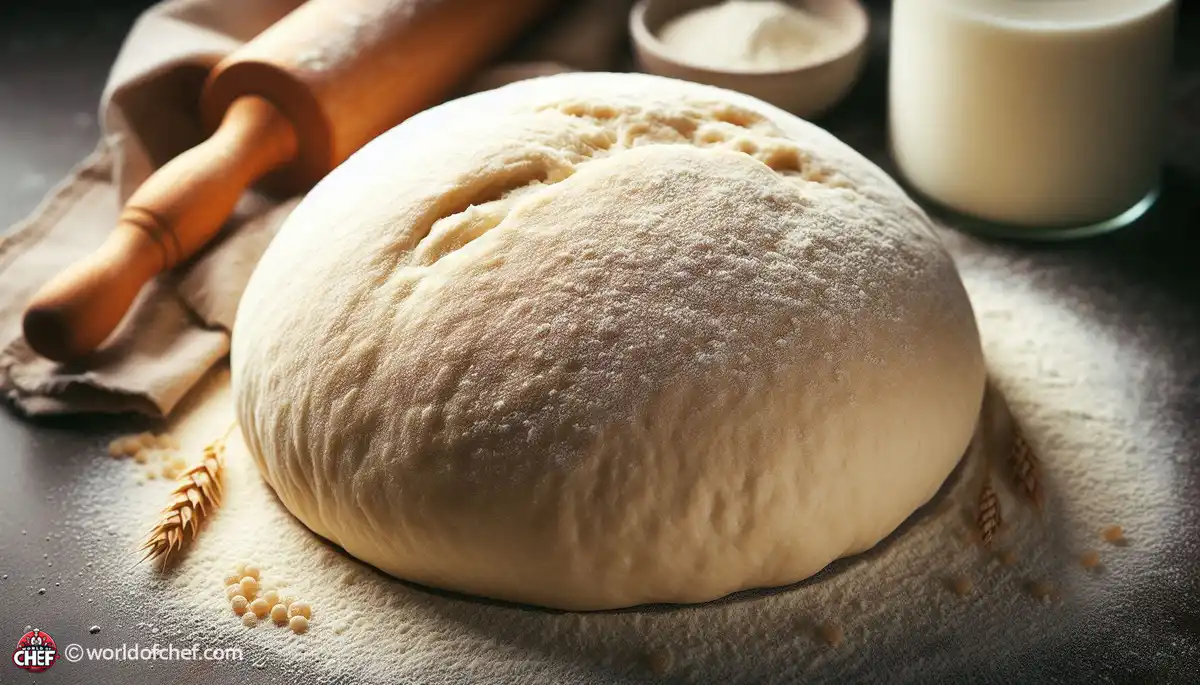
Simmering with Spices: Infusing Flavor into Your Dishes
Emery Donley - Oct 8, 2024 - 8 min read


Gluten formation is one of the key factors involved in baking bread. Gluten is a protein that is formed by mixing water and flour, primarily wheat flour. It provides elasticity to bread and makes it chewy. But gluten formation does not occur overnight. This would take some time for the proteins to line up to strengthen the network. That is where the resting dough comes in. Resting time gives the gluten strands some time to relax and straighten themselves out for that elastic, workable dough.
Dough resting allows fermentation to happen. During fermentation, carbon dioxide gas and alcohol get produced from the sugars digested by yeast in dough. This process makes the dough rise but it gives bread much more complex flavors. Simultaneously, it allows enough time to flour enzymes to break starches into sugars contributing to flavor development. Thus, with longer resting times, a more pronounced flavor is eventually developed. This explains why artisan breads with long fermentation periods have such deep, rich flavors. Better Dough Handling
Another benefit of resting dough is in handling. Dough newly kneaded is quite tricky in its shaping and forms, it may be tacky enough to tear in just pulling it. It must be given time rest with this being an allowance on hydrating completely while on a relaxing state whereby allowing the dough to go tenderly on the hand side. Resting gives leeway for the actual 'feel' of how this dough feels so a feel on its consistency enables for making the necessary alteration ahead of shaping and then in baking.
Dough resting contributes to better texture and structure of the finished bread. In the resting period, gluten strands relax and line so that dough becomes more elastic. Elastic dough stretches and does not tear, meaning it produces a lighter and airier crumb. Bread which has good elasticity also bakes well and holds a better shape, making for a better-looking loaf.
Resting dough will allow you to have a better uniform crumb structure when you are done with your bread. If dough is shaped and baked immediately after kneading, the gluten strands may not have time to relax and redistribute uniformly. This will lead to uneven air pockets and dense crumb. However, allowing the dough to rest before shaping gives the gluten strands time to relax and redistribute, which means that the crumb structure throughout the loaf will be more even.
Resting dough also contributes to better oven spring, that is, the final rise that happens in the oven during baking. When the dough is allowed to rest before it is shaped, the gluten strands have time to relax and strengthen the dough. It will rise more evenly in the oven. It will result in a loaf with a greater rise and lighter texture. In this regard, rested dough will tear less when baking. The process above would facilitate ideal oven spring.
In resting dough, time and temperature have to be taken into consideration. Resting time is relative to the kind of bread to be made and the ambient temperature in the kitchen. Most bread doughs need a resting time of 30 minutes to an hour. However, sometimes longer resting times are required in recipes that contain a preferment or sourdough starter. Furthermore, the temperature of the resting environment may influence fermentation and flavor development. A slightly warmer environment will quicken fermentation, whereas a cooler environment results in slower fermentation and an even more flavorful result.
When covering the dough during resting time, avoid making the dough dry. A lightly greased bowl covered with plastic wrap or a damp kitchen towel serves the purpose. The cover retains moisture in the dough and lets the dough ferment and acquire flavor. Also, it avoids drafts that can influence fermentation and stability of temperature.
This is key before shaping and baking: the dough must be at its best. The well-rested dough will yield to a smooth, elastic feel and a slight puff. It should also leave an indentation when pressed lightly with a finger. If the dough springs back right away, it may have been rested too little. On the other hand, if the dough collapses or feels too slack, it may have overfermented and needs to be reshaped. Through observing these visual and tactile cues, one is able to make sure doughs are rested and ready for the next steps in the baking process.

Emery Donley - Oct 8, 2024 - 8 min read

Russell Comeaux - Oct 8, 2024 - 8 min read

Walter Backus - Oct 7, 2024 - 8 min read

Samantha Thames - Oct 7, 2024 - 6 min read